The Secret Life of Your Pencil
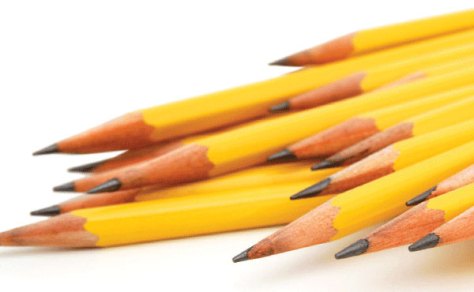
Searching for a symbol of the free market, Leonard E. Read settled on the lowly pencil. It is, he wrote in a 1958 essay, “a complex combination of miracles: a tree, zinc, copper, graphite, and so on.” Add to these miracles of nature “the configuration of creative human energies” and you have a ubiquitous writing instrument—and a classic example of the global trade cycle.
1
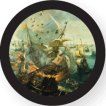 Take pencil leads, which aren’t lead at all but a mixture of graphite and clay. That’s why insiders like Henry Hulan, president of Tennessee-based Musgrave Pencil Co., call them “pencil cores.” First mined industrially in Borrowdale in northwestern England, graphite was used in the sixteenth century to line molds in the production of smoother cannon balls that flew farther and faster. Graphite helped create the British empire.
Take pencil leads, which aren’t lead at all but a mixture of graphite and clay. That’s why insiders like Henry Hulan, president of Tennessee-based Musgrave Pencil Co., call them “pencil cores.” First mined industrially in Borrowdale in northwestern England, graphite was used in the sixteenth century to line molds in the production of smoother cannon balls that flew farther and faster. Graphite helped create the British empire.
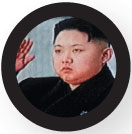 2
2
Today, the world’s top graphite producers are also among the world’s fastest-developing economies: China, India, Brazil. Oh, and North Korea.
 3
3
Like most U.S. pencil makers, 96-year-old Musgrave Pencil Co. no longer produces its own cores. Most are made in China, shipped through West Coast ports and trucked cross-country to the company’s Shelbyville facility.
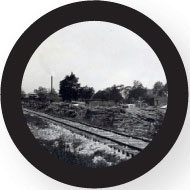 4
4
Musgrave Pencil was established in Shelbyville because of two features: the proximity of a major stop on the Louisville & Nashville Railroad (now part of CSX) and the presence of vast stands of cedar trees. Cedar is best for pencils because it doesn’t splinter during sharpening.
5
When Shelbyville’s cedars ran out, the company imported wood from California and Oregon. Cheaper Chinese wood entered the market in the 1990s, but rising Chinese demand for wood has driven some pencil makers to Russian wood—or back to the U.S.
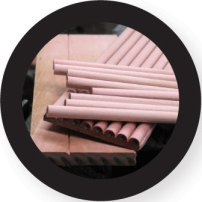 6
6
Before they are neat, cylindrical pencils, they are like conjoined octuplets—a single flat piece of cedar the length of one pencil and the width of eight, called slats. California Cedar Products Company (CCPC) has produced the slats that become Musgrave pencils for “30 or 40 years,” Hulan says, and still does—though in 2001 CCPC outsourced production to its Chinese subsidiary, Tianjin Custom Wood Processing, Co. The California firm ships Oregon wood in containers via the Port of Portland to Tianjin; re-imports the processed slats through the Port of Oakland; and trucks those slats to Shelbyville—and around the world: “About 60 percent of our product is for export,” says CCPC President Charles Berolzheimer.
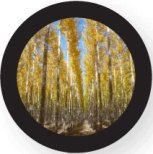 7
7
CCPC says it’s bringing to market “uniquely engineered hybrid poplar clones grown at the 30,000-acre Greenwood Tree Farm plantation in Boardman, Oregon.” Unlike California’s rugged Sierra Nevada, or freezing Northeastern China and Russia’s Far East, Boardman is temperate and flat, producing trees with a short, 14-year “rotation cycle.” Those conditions allow for year-round harvesting, and “make supply-chain planning much easier,” says Berolzheimer.
8
Musgrave Pencil Co. runs the slats through a milling machine that cuts the grooves in which the pencil cores will rest. Add glue and top with another grooved slat and you have a pencil sandwich. Slice that into pencils and add six coats of paint to each.
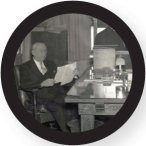 9
9
Hulan’s company still runs several locally made machines that are 40 or 50 years old—and, amazingly, a few others that his grandfather, James Raford Musgrave, bought when he launched the business in 1916. Most new machines, he notes, come from China, but when Musgrave needs a new machine, Hulan turns to three on-staff machinists to build it from scratch.
10
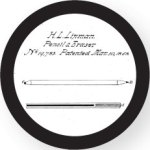 The eraser on your pencil? Credit Hymen L. Lipman. The Jamaican immigrant earned a U.S. Patent for the rubber-tipped pencil (No. 19,783) in 1858. He wisely sold that patent to Joseph Reckendorfer for the then-remarkable sum of $100,000—about $2 million today. Reckendorfer immediately sued pencil-maker Faber for infringement. He lost when the U.S. Supreme Court declared the patent invalid in 1862: the pencil and the eraser, the court found, were already in wide use, and merely combining them was not patentable.
The eraser on your pencil? Credit Hymen L. Lipman. The Jamaican immigrant earned a U.S. Patent for the rubber-tipped pencil (No. 19,783) in 1858. He wisely sold that patent to Joseph Reckendorfer for the then-remarkable sum of $100,000—about $2 million today. Reckendorfer immediately sued pencil-maker Faber for infringement. He lost when the U.S. Supreme Court declared the patent invalid in 1862: the pencil and the eraser, the court found, were already in wide use, and merely combining them was not patentable.
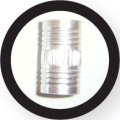 11
11
The little metal cylinder that binds the eraser to the pencil is called a ferrule. Musgrave once made both erasers and ferrules on site. Now? A firm down in Atlanta supplies some erasers, but most erasers—and all ferrules—are made in China.
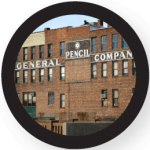 12
12
In 1993, the Clinton Administration imposed a tariff on Chinese-made pencils. Even that couldn’t stop the transformation of the industry: “The yellow pencil basically became a Chinese commodity,” Jim Weissenborn of New Jersey-based General Pencil Co. told Bloomberg last year. “We’ve had to become a very boutique type of business in order to survive.”
13
Most Musgrave pencils sell in the U.S. but the company ships some to the U.K. through Southeastern ports, and to Australia through West Coast ports. Shipments to Mexico and Canada run on trucks to the border where Musgrave’s customers arrange for pick up.
 14
14
CCPC’s Berolzheimer predicts declining U.S. energy costs (driven by rising domestic natural gas production and fracking) and rising labor costs in China will push pencil-makers to Mexico, India—even back the U.S. Those who remain offshore will lose a critical edge, he says: “Long lead times on overseas supply chains complicate planning and inventory investment while domestic producers can often be more flexible with quicker response times.”
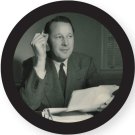 15
15
And that brings us back to Leonard E. Read and his 1958 essay: “The lesson I have to teach is this: Leave all creative energies uninhibited. Merely organize society to act in harmony with this lesson. Let society’s legal apparatus remove all obstacles the best it can. Permit these creative know-hows freely to flow. Have faith that free men and women will respond to the Invisible Hand. This faith will be confirmed. I, Pencil, seemingly simple though I am, offer the miracle of my creation as testimony that this is a practical faith, as practical as the sun, the rain, a cedar tree, the good earth.”



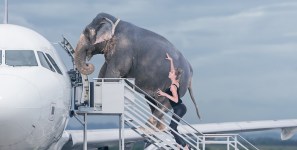
Leave a Reply